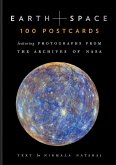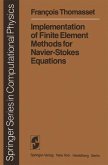In this thesis I, along with my supervisors, have faced the technical difficulties of the polarimetric measurements carried out by single-dish radio telescopes. We have developed and successfully applied a new calibration procedure, based on the analysis of the signal propagation within a typical radioastronomical receiver, which allows the contemporary measurement of all four Stokes parameters. We have used this new capability to carry out a polarimetric survey at 5 GHz, targeted on the Northern Kühr catalog. The project has been carried out by the Effelsberg antenna and the Westerbork interferometer. The values for all the Stokes parameters have been measured for 257 sources, at 5 GHz. Following the very good results obtained at 5 GHz, we have extended the new calibration procedure to the frequencies of 2.7, 8.5 and 10.5 GHz, obtaining the first full Stokes spectra measured at Effelsberg. In order to correlate the spectral features to the physical parameters of the sources, we have used a numerical code that simulated the propagation of the polarized radiation through a simple source model and we have compared the observed spectra with the theoretical simulated ones.
Bitte wählen Sie Ihr Anliegen aus.
Rechnungen
Retourenschein anfordern
Bestellstatus
Storno








